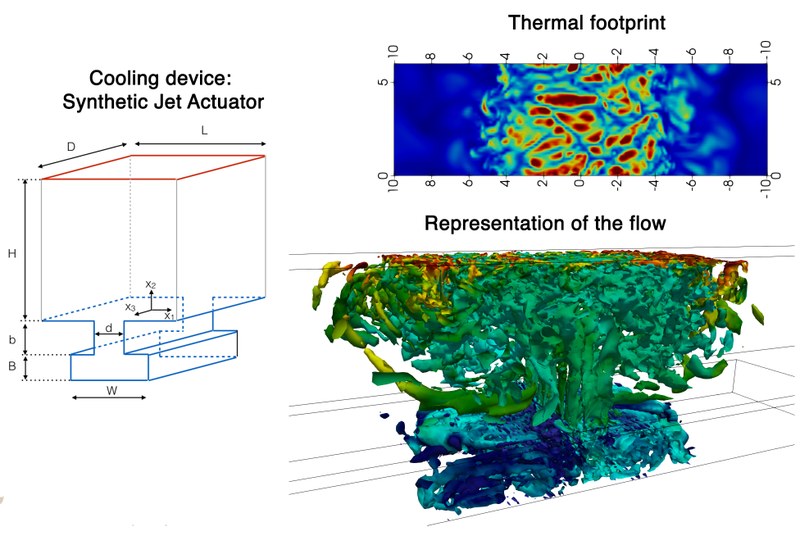Aeronautical Engineer in UPC leads finding on accurate description of key aerospatial cooling prototype
Feb 14, 2019
The computational research, lead by Arnau Miró, professor in the Aerospace Engineering Division of the Physics Department and a member of the TUAREG research group, has been published in the International Journal of Thermal Sciences in collaboration with the CASE department in the Barcelona Supercomputing Center. As Arnau Miró says, he is focused on understanding “how to cool future stuff using Synthetic Jets” with a special focus on synthetic jet actuators.
The ability to manipulate a flow field in order to improve efficiency or performance and the need for compact cooling solutions in Aerospace and Mechanical Engineering that meet good performance requirements at compact volumes are topics of utmost technological importance nowadays. During the late 90s and the early 2000s, many studies were performed regarding a device that had the potential to address this technological need: the Synthetic Jet Actuator (SJA). This prototype consists of a cavity with a mechanically moving diaphragm, whose actuation changes the cavity volume periodically, causing external fluid to enter and leave through a small slot. Under certain conditions, a jet is created without the addition of mass flow, allowing the transfer of kinetic energy and momentum to a fluid medium without the need for piping systems.
The flow patterns that result from the interaction of the currents enter and leaving the cavity with the external flow are very complex rendering computational simulations very important in order to understand the flow, and therefore the cooling abilities of SJA. A. Miró is particularly focused on investigating the cooling capabilities of a synthetic jet enclosed between two parallel plates with an imposed temperature difference. In the article published in International Journal of Thermal Sciences, in collaboration with the CASE department of the Barcelona Supercomputing Center, computer simulation of unsteady three-dimensional Navier-Stokes equations together with a proper model of the membrane solves accurately the velocity and temperature profiles at the SJA outlet for the first time. The group has found a vortical structure which plays a major role in limiting the jet's heat transfer enhancement mechanism and that previous works might have overestimated how good the cooling process can be. These results are key to future improvements in the prototype.
Arnau Miró is a member of the interdepartmental research group on Turbulence and Aerodynamics in Mechanical and Aerospatial Engineering (TUAREG).
Numerical study of heat transfer from a synthetic impinging jet with a detailed model of the actuator membrane

Share: